Skoda Fabia VS Hyundai Bayon – Specs, Efficiency & Price Comparison
Which model is the better choice – the Skoda Fabia or the Hyundai Bayon? We compare performance (150 HP vs 100 HP), boot capacity (380 L vs 411 L), efficiency (5 L vs 5.40 L), and of course, the price (16600 £ vs 19600 £).
Find out now which car fits your needs better!
The Skoda Fabia (Hatchback) is powered by a Petrol engine and comes with a Manuel or Automatic transmission. In comparison, the Hyundai Bayon (SUV) features a Petrol engine and a Manuel or Automatic gearbox.
When it comes to boot capacity, the Skoda Fabia offers 380 L, while the Hyundai Bayon provides 411 L – depending on what matters most to you. If you’re looking for more power, you’ll need to decide whether the 150 HP of the Skoda Fabia or the 100 HP of the Hyundai Bayon suits your needs better.
There are also differences in efficiency: 5 L vs 5.40 L. In terms of price, the Skoda Fabia starts at 16600 £, while the Hyundai Bayon is available from 19600 £.
Compare all the key specs now and find out which model fits your lifestyle best!
In the compact SUV segment, the Hyundai Bayon stands out with its modern design and urban-friendly dimensions, making it an ideal choice for city dwellers seeking style and practicality. On the other hand, the Skoda Fabia excels with its spacious interior and strong emphasis on practicality, offering an excellent option for those prioritizing roominess and comfort on longer journeys. Both vehicles exemplify their brands' commitment to delivering reliable and efficient city cars, but the Hyundai Bayon edges out in terms of tech features, while the Skoda Fabia shines with its ample cargo space.
Skoda Fabia
The Skoda Fabia presents itself as a practical and stylish hatchback, perfect for urban driving and beyond. Its interior is designed with comfort and functionality in mind, offering ample space and intuitive controls. With a focus on efficiency, the Fabia provides a smooth driving experience, complemented by its crisp and modern exterior design.
details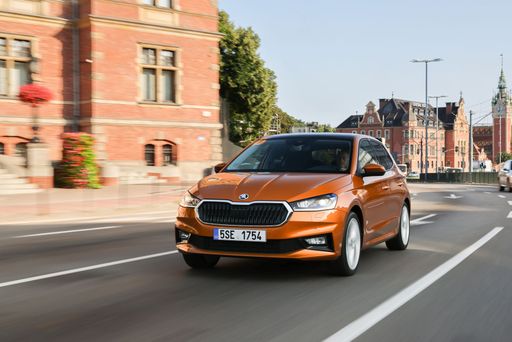 @ Skoda Presse Deutschland
@ Skoda Presse Deutschland
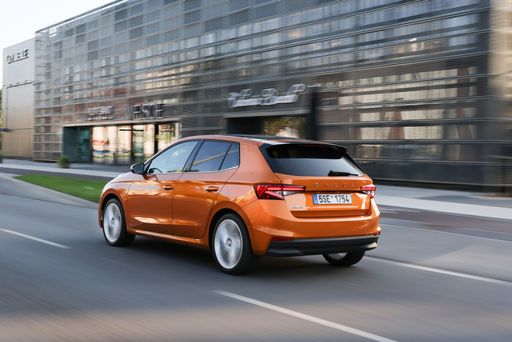 @ Skoda Presse Deutschland
@ Skoda Presse Deutschland
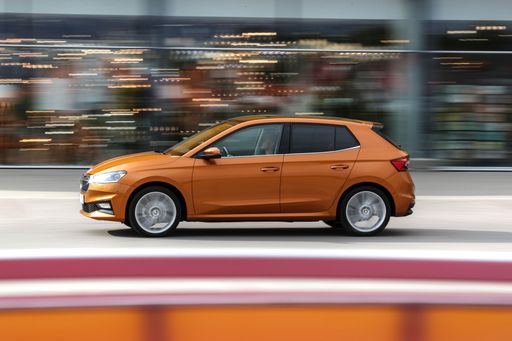 @ Skoda Presse Deutschland
@ Skoda Presse Deutschland
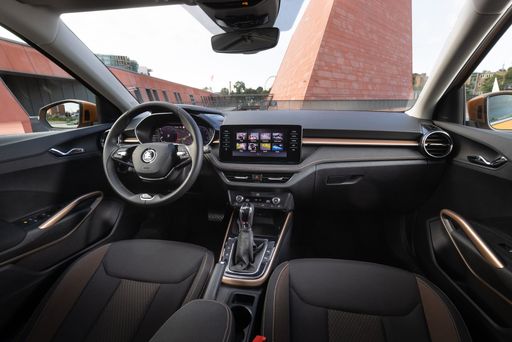 @ Skoda Presse Deutschland
@ Skoda Presse Deutschland
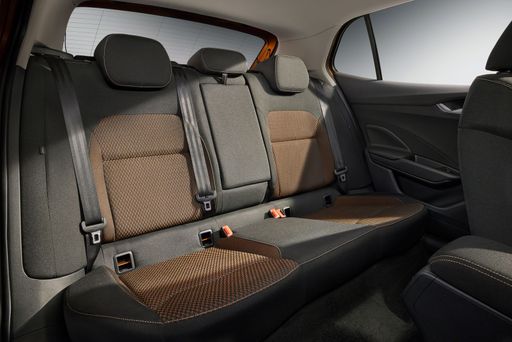 @ Skoda Presse Deutschland
@ Skoda Presse Deutschland
Hyundai Bayon
The Hyundai Bayon is a compact crossover that effortlessly merges practicality with modern design. Its sleek exterior and spacious interior make it an ideal choice for urban settings and longer journeys alike. With a focus on comfort and connectivity, this vehicle provides a smooth driving experience paired with advanced technology features.
details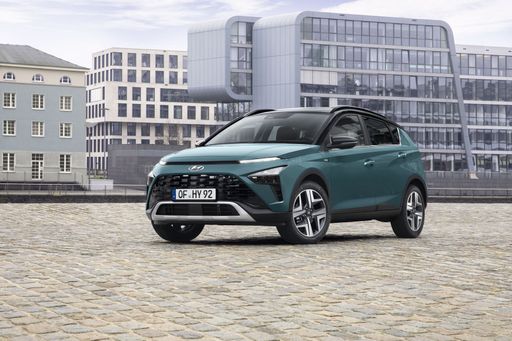 @ hyundai.news
@ hyundai.news
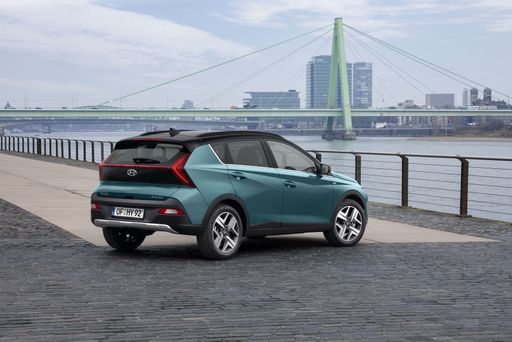 @ hyundai.news
@ hyundai.news
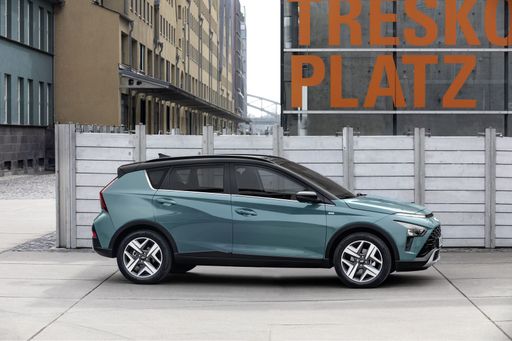 @ hyundai.news
@ hyundai.news
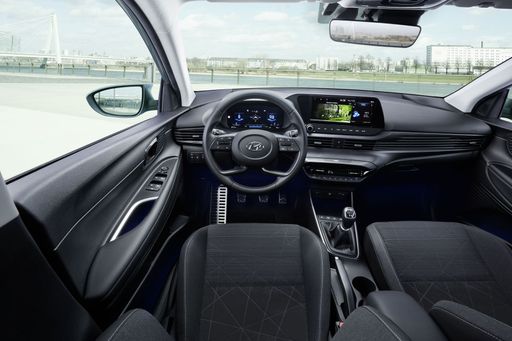 @ hyundai.news
@ hyundai.news
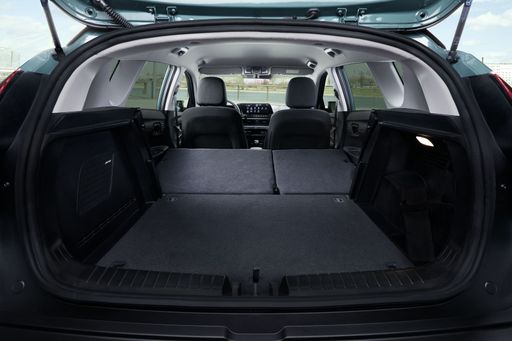 @ hyundai.news
@ hyundai.news
The Urban Warriors: Hyundai Bayon VS Skoda Fabia
In the world of compact and versatile automobiles, the Hyundai Bayon and the Skoda Fabia emerge as strong contenders. With their unique appeal, impressive technical specifications, and innovative features, choosing the right fit for urban driving requires a closer look at both options. Let’s dive into the specifics and see how these two popular models stack up against each other.
Design and Body: Compact Stylishness
The Hyundai Bayon, with its SUV body type, exudes a robust and sporty presence thanks to its dimensions of 4180 mm in length, 1775 mm in width, and 1500 mm in height. It offers ample space with a trunk capacity of 411 liters, making it ideal for both city commutes and weekend getaways. On the other hand, the Skoda Fabia, a hatchback, appeals with its sleek design, slightly shorter in length at 4108 mm but similarly spacious with a trunk capacity of 380 liters.
Engine Performance: Power vs. Efficiency
The Hyundai Bayon is equipped with a 998 cm3, three-cylinder petrol engine that delivers 100 HP (74 kW) of power and offers a smooth driving experience with a dual option of manual and dual-clutch automatic transmission. Whether manual or automatic, the Bayon achieves a 0-100 km/h acceleration in just under 12.4 seconds and boasts a top speed of 179 km/h.
Conversely, the Skoda Fabia offers a broader range of power options, starting from 80 HP and going up to 150 HP. Its engine options include both three and four-cylinder variants, with engine capacities ranging from 999 cm3 to 1498 cm3. The Fabia can accelerate from 0 to 100 km/h in as fast as 8 seconds while reaching maximum speeds of up to 225 km/h in its higher trims.
Fuel Efficiency and Environmental Impact
When it comes to fuel efficiency, the Bayon offers a consumption rate of 5.4 L/100 km and a CO2 emission of 122 g/km, classifying it in the D CO2 efficiency class. The Fabia, meanwhile, is more diverse in its consumption figures depending on the engine choice, ranging from 5 to 5.5 L/100 km, with a CO2 emission as low as 112 g/km, earning some variants a C class in CO2 efficiency.
Drive Comfort and Features
Both the Hyundai Bayon and the Skoda Fabia come with a front-wheel drive, presenting a similar driving feel that's well-suited for urban environments. Each model seats five passengers, offering comfort-driven interiors with modern technology and infotainment systems tailored for today's needs.
The Bayon emphasizes a higher driving position typical of SUVs, enhancing visibility and road presence, whereas the Fabia's hatchback style appeals to those looking for nimble maneuvering and compact simplicity without compromising on interior comfort.
Conclusion: Choosing Your Urban Companion
The choice between the Hyundai Bayon and the Skoda Fabia boils down to personal preference and individual needs. The Bayon stands out for those seeking an SUV's practicality and higher riding experience without excessive bulk. In contrast, the Fabia caters to a wider performance range and the elegant simplicity of a hatchback format, ideal for those prioritizing engine variety and dynamic driving.
Both vehicles promise reliability and efficiency with their 2024 models, leaving the decision to be made according to lifestyle, driving preferences, and performance demand.

|

|
|
|
|
Costs and Consumption |
|
|---|---|
|
Price
16600 - 25600 £
|
Price
19600 - 25400 £
|
|
Consumption L/100km
5 - 5.5 L
|
Consumption L/100km
5.40 L
|
|
Consumption kWh/100km
-
|
Consumption kWh/100km
-
|
|
Electric Range
-
|
Electric Range
-
|
|
Battery Capacity
-
|
Battery Capacity
-
|
|
co2
112 - 124 g/km
|
co2
122 g/km
|
|
Fuel tank capacity
40 L
|
Fuel tank capacity
40 L
|
Dimensions and Body |
|
|---|---|
|
Body Type
Hatchback
|
Body Type
SUV
|
|
Seats
5
|
Seats
5
|
|
Doors
5
|
Doors
5
|
|
Curb weight
1116 - 1310 kg
|
Curb weight
1170 - 1195 kg
|
|
Trunk capacity
380 L
|
Trunk capacity
411 L
|
|
Length
4108 mm
|
Length
4180 mm
|
|
Width
1780 mm
|
Width
1775 mm
|
|
Height
1459 - 1479 mm
|
Height
1500 mm
|
|
Payload
360 - 457 kg
|
Payload
460 - 465 kg
|
Engine and Performance |
|
|---|---|
|
Engine Type
Petrol
|
Engine Type
Petrol
|
|
Transmission
Manuel, Automatic
|
Transmission
Manuel, Automatic
|
|
Transmission Detail
Manual Gearbox, Dual-Clutch Automatic
|
Transmission Detail
Manual Gearbox, Dual-Clutch Automatic
|
|
Drive Type
Front-Wheel Drive
|
Drive Type
Front-Wheel Drive
|
|
Power HP
80 - 150 HP
|
Power HP
100 HP
|
|
Acceleration 0-100km/h
8 - 15.7 s
|
Acceleration 0-100km/h
11.3 - 12.4 s
|
|
Max Speed
175 - 225 km/h
|
Max Speed
176 - 179 km/h
|
|
Torque
93 - 250 Nm
|
Torque
172 - 200 Nm
|
|
Number of Cylinders
3 - 4
|
Number of Cylinders
3
|
|
Power kW
59 - 110 kW
|
Power kW
74 kW
|
|
Engine capacity
999 - 1498 cm3
|
Engine capacity
998 cm3
|
General |
|
|---|---|
|
Model Year
2024
|
Model Year
2024
|
|
CO2 Efficiency Class
D, C
|
CO2 Efficiency Class
D
|
|
Brand
Skoda
|
Brand
Hyundai
|
Skoda Fabia
The Skoda Fabia: Precision Meets Practicality
The Skoda Fabia has long been a favourite in the compact car segment, and the 2024 version continues to uphold its reputation for delivering a perfect blend of efficiency, performance, and affordability. With a fresh design and advanced technological innovations, the Fabia is set to impress both new drivers and loyal enthusiasts alike.
Under the Bonnet: Engine Specifications
At the heart of the Skoda Fabia lies a range of efficient petrol engines tailored to meet diverse driving needs. The engine line-up includes three-cylinder and four-cylinder options, offering power outputs between 80 PS to 150 PS, corresponding to 59 kW to 110 kW. These engines strike an ideal balance between spirited performance and fuel economy, boasting consumption rates between 5 to 5.5 litres per 100 km, depending on the variant.
Transmission Options: Manual and Automatic
Drivers can choose from manual or automatic transmissions based on their preference for driving dynamics. The manual gearbox provides a traditional, engaging driving experience, while the advanced automatic dual-clutch transmission (DSG) offers seamless gear changes for a more relaxed commute.
Design and Dimensions: Compact Yet Spacious
The Fabia's exterior design remains quintessentially Skoda—sharp, elegant, and functional. The car measures 4108 mm in length, 1780 mm in width, and stands 1479 mm tall. Despite its compact footprint, the interior is surprisingly spacious, comfortably seating five and providing a commodious boot space of 380 litres.
Performance Metrics: Speed and Agility
Acceleration varies between 8 to 15.1 seconds for a 0-100 km/h sprint, with a maximum speed of 179 to 225 km/h, making it a versatile choice for urban and highway driving. Furthermore, the front-wheel-drive system ensures excellent traction and handling in various road conditions.
Fuel Efficiency and Environmental Impact
Skoda continues its commitment to sustainability with the Fabia, achieving CO2 emissions between 113 to 124 g/km. These figures not only highlight the vehicle's eco-friendly credentials but also result in lower running costs for the consumer, making it an astute financial choice.
Trim Levels and Customisation
The Fabia is available in six distinct trim levels: Drive, Essence, Selection, Drive DSG, Monte Carlo, and Monte Carlo DSG. Each variant offers its own set of features and customisation options, allowing buyers to tailor the vehicle to their specific taste and lifestyle needs.
Conclusion: A Compact Car with Much to Offer
In conclusion, the Skoda Fabia stands out in the compact car segment with its remarkable balance of performance, practicality, and affordability. With prices ranging from €19,320 to €29,840, it offers great value for money, appealing to a wide range of car buyers seeking reliability and innovation in their daily drive.
Hyundai Bayon
Introducing the Hyundai Bayon: A New Era in Compact SUVs
The Hyundai Bayon, a compact SUV designed with urban adventurers in mind, is making waves with its exceptional blend of style, performance, and technology. The brand has pulled out all the stops to ensure that the Bayon stands out in the crowded SUV market, offering a vehicle that is both practical and innovative.
Sleek Design and Cutting-Edge Aerodynamics
The Bayon features a striking exterior design, characterised by its bold lines and angular shapes. With a length of 4180 mm, a width of 1775 mm, and a height of 1500 mm, the Bayon commands attention with its modern appeal and aerodynamic efficiency. These dimensions not only contribute to its sleek design but also enhance fuel efficiency, achieving an impressive 5.4 L/100 km.
Engine Performance and Specifications
Under the bonnet, the Bayon is powered by a 1.0-litre T-GDI petrol engine, delivering a robust 100 PS or 74 kW. This engine is available with either a manual or automatic gearbox, meeting varied driver preferences. The front-wheel-drive system complements its urban-centric design, ensuring a smooth and responsive ride.
Maximised Interior Space and Comfort
The spacious interior of the Bayon accommodates up to five passengers comfortably. The vehicle boasts a boot space of 411 litres, perfect for both everyday use and weekend getaways. The cabin is designed with practicality and technology in mind, with intuitive controls and ample storage options.
Advanced Technology and Connectivity
Hyundai has equipped the Bayon with state-of-the-art technology to enhance the driving experience. The SUV features a high-resolution touchscreen, offering seamless connectivity with Apple CarPlay and Android Auto. Safety is also a priority, with multiple driver assistance systems including lane-keeping assist and forward collision avoidance assist.
Environmental Efficiency
Despite its powerful performance, the Bayon achieves a respectable CO2 efficiency class of D, with emissions as low as 122 g/km. This balance between performance and environmental responsibility makes the Bayon an attractive option for conscientious drivers.
Affordability and Market Appeal
The Hyundai Bayon is competitively priced, ranging from €22,900 to €29,600. Its affordable running costs, estimated at 32.3 to 36.4 cents per kilometre, further enhance its appeal to budget-conscious consumers. With monthly costs ranging from €806 to €909, the Bayon provides excellent value without compromising on features or performance.
Final Thoughts
The Hyundai Bayon truly stands out in the compact SUV segment, combining style, innovation, and practicality in an appealing package. It offers a versatile driving experience suited to the demands of modern urban living, making it a top contender in its class. As Hyundai continues to champion forward-thinking design and technology, the Bayon is a testament to the company's ongoing commitment to excellence.
The prices and data displayed are estimates based on German list prices and may vary by country. This information is not legally binding.
